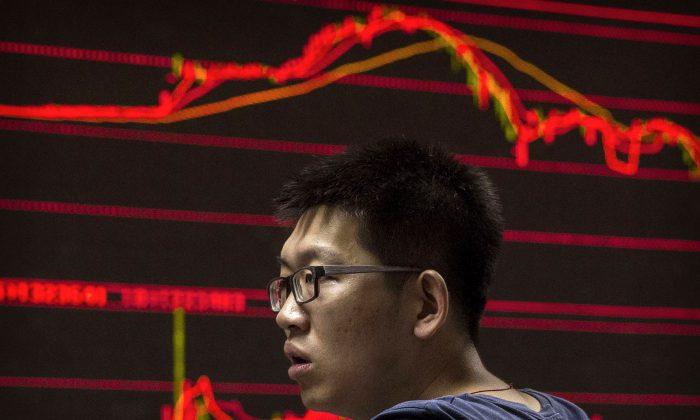Financial crises follow certain patterns. Harvard Professor Carmen Reinhart analyzed these patterns using 800 years of data, in her book “This Time Is Different.”
Five years after the book’s publication, she finds China is different and not different at the same time.
“The bigger concerns about China are not external debt, but internal debt,” she says. External debts owed in foreign currencies set off the Mexican crisis in the mid ‘90s and the Asian crisis in the late ’90s.
This is where China is different. External debt in China is low, but domestic debt has ballooned to 242 percent of GDP, according to McKinsey. And there are some elements we don’t know about.
“There’s a shadow banking sector in which corporates who had access to international capital markets got into the business of lending to smaller firms, domestic firms that did not have access to international capital markets,” she says.
China is not different inasmuch as too much internal debt can lead to crisis as well. “It doesn’t mean you can’t have a significant internal debt crisis and indeed they’re moving in the direction of much-needed restructuring,” she says about the efforts of the regime to restructure local-government debt.
In fact, China is similar to Japan, which also didn’t have a lot of external debt, but suffered from a credit collapse nonetheless.
“It had a lot of internal debt in connection with the boom in the Nikkei stock market, connected with the boom in real estate prices in Japan. So it had a very significant domestic crisis. That’s really what we’re talking about in the context of China. We are seeing, I think, by most indicators, more capital flight from China,” she says.
The only difference: Japan’s currency strengthened in the first years of the crisis, different from the Chinese currency, which is currently depreciating. In fact, the Chinese regime has to support it in international foreign exchange markets.
China, like Japan, has more tools to manage the crisis because the debt is confined within the country’s own borders and the regime controls the banks, which control the debt.
“If you are a country that’s borrowed in your own currency and the debt is held by local institutions, you as a government have a lot more leverage on that domestic resident that’s holding your debt,” says Reinhart.
China’s currency falls because its citizens want to diversify their assets internationally as well, not so much because external debt starts to unwind as it did in Mexico and Asia in the ‘90s.
“Having a period in which your own residents want to diversify into something else is not the same as having an external debt crisis,” Reinhart says.
Reinhart thinks China should restructure the bad debts quickly, rather than keep rolling them over, advice which is seldom followed.
“You have all these bad provincial debts and if you restructure them, you move to restructure them fairly aggressively, fairly quickly, you have a much better shot of a much quicker recovery than if you do what Japan did or what much of Europe has been doing which is avoiding haircuts, avoiding restructurings.”





